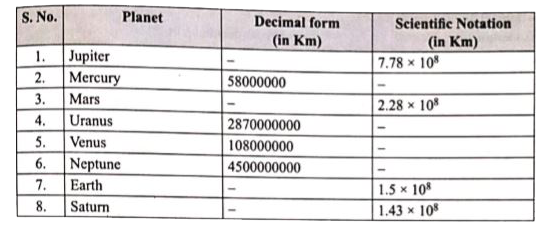If K = {a, b, d, e, f}, L = {b, c, d, g} and M = (a, b, c, d, h} then find the following:
K∪(L∩M) and verify distributive laws.Solution in Tamil
Step by step video & image solution for If K = {a, b, d, e, f}, L = {b, c, d, g} and M = (a, b, c, d, h} then find the following: Kcup(LcapM) and verify distributive laws. by Maths experts to help you in doubts & scoring excellent marks in Class 9 exams.
Updated on:21/07/2023Topper's Solved these Questions
- SET LANGUAGEBOOK - FULL MARKSCHAPTER - SET LANGUAGEEXERCISE - Exercise 1.6
12 Videos
- SET LANGUAGEBOOK - FULL MARKSCHAPTER - SET LANGUAGEEXERCISE - Exercise 1.7 (MCQ)
20 Videos
- SET LANGUAGEBOOK - FULL MARKSCHAPTER - SET LANGUAGEEXERCISE - Exercise 1.4
5 Videos
- REAL NUMBERSBOOK - FULL MARKSCHAPTER - REAL NUMBERSEXERCISE - Text Book Activity (Activity 3:)
1 Videos
- STATISTICSBOOK - FULL MARKSCHAPTER - STATISTICSEXERCISE - Assignment (Answer the following question)
10 Videos
Similar Questions
(i)If n(A)=25, n(B)=40, n(A∪B)=50andn(B')=25, find n(A∩B)andn(U).
(ii) If n(A)=300,n(A∪B)=500,n(A∩B)=50andn(B')=350, find n(B)andn(U).
View SolutionWhich of the following is correct?
View SolutionIf P={1,2,5,7,9}, Q={2,3,5,9,11}, R={3,4,6,7,9} and S={2,3,4,5,8} then find
(i) (P∪Q)∪R) (ii) (P∩Q)∩S (iii) (Q∩S)∩R
View SolutionThe following list shows the mean distance of the plants of the solar system from the Sun. Complete the following table. Then arrange in order of magnitude starting with the distance of the planet closest to the Sun.

View SolutionIf the mean of 6,x, 4 and 12 is 8 then find the value of x.
View SolutionIf U = {a, b, c, d, e, f, g, h}, A = {b, d, f, h} and B = {a, d, e, h}, find the following sets.
A'
View SolutionIf U = {a, b, c, d, e, f, g, h}, A = {b, d, f, h} and B = {a, d, e, h}, find the following sets.
B'
View SolutionIf U = {a, b, c, d, e, f, g, h}, A = {b, d, f, h} and B = {a, d, e, h}, find the following sets.
(A∪B)'
View SolutionIf U = {a, b, c, d, e, f, g, h}, A = {b, d, f, h} and B = {a, d, e, h}, find the following sets.
(A')'
View SolutionIf U = {a, b, c, d, e, f, g, h}, A = {b, d, f, h} and B = {a, d, e, h}, find the following sets.
(B')'
View SolutionIf K = {a, b, d, e, f}, L = {b, c, d, g} and M = (a, b, c, d, h} then find the following:
K∪(L∩M) and verify distributive laws.
View SolutionIf K = {a, b, d, e, f}, L = {b, c, d, g} and M = (a, b, c, d, h} then find the following:
K∩(L∪M) and verify distributive laws.
View SolutionIf K = {a, b, d, e, f}, L = {b, c, d, g} and M = (a, b, c, d, h} then find the following:
(K∪L)∩(K∪M) and verify distributive laws.
View SolutionIf K = {a, b, d, e, f}, L = {b, c, d, g} and M = (a, b, c, d, h} then find the following:
(K∩L)∪(K∩M) and verify distributive laws.
View SolutionIf U = {a,b,c,d,e,f,g,h} , find the complement of the following sets:
A= {a,b,c} , B ={d,e,f,g} , C ={a,c,eg}, D = {f,g,h,a}.
View SolutionK={a,b,d,e,f}, L={b,c,dg}மற்றும் M={a,b,c,d,h}என்ற கணங்களுக்குப் பங்கீட்டு விதிகளைச் சரிபார்க்க ? K∪(L∩M)
View Solution
